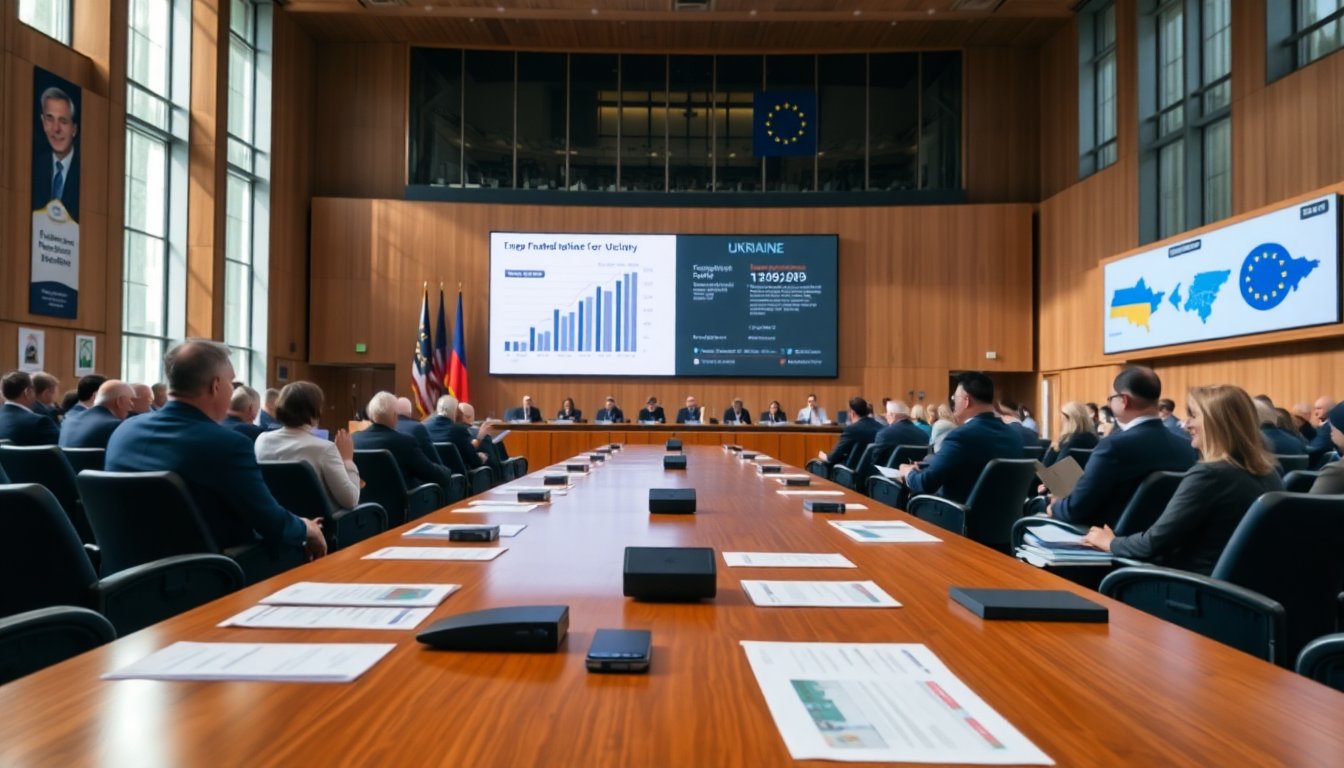Table of Contents
In a critical moment for Ukraine, the European Union is examining various financial strategies to sustain the nation amid its ongoing conflict with Russia. European Commission President Ursula von der Leyen has recently addressed the European Parliament, shedding light on alternative funding avenues, particularly in light of Belgium’s resistance to utilizing frozen Russian assets. This situation highlights the EU’s urgency to support Ukraine financially as it faces significant budgetary challenges.
Funding options for Ukraine’s recovery
The European Commission has proposed a plan that would leverage frozen Russian state assets, estimated at around €140 billion, to facilitate a reparations loan for Ukraine. However, this initiative has encountered substantial roadblocks, primarily due to concerns raised by Belgium. The country is home to significant financial institutions, such as Euroclear, which manages most of the frozen assets. Belgium’s apprehensions stem from potential legal and financial repercussions related to the repurposing of these assets.
Belgium’s concerns and the EU’s response
Belgium’s Prime Minister Bart De Wever has been vocal about the risks associated with this financial scheme. His government is currently navigating a domestic budget crisis, which complicates their involvement in a large-scale European loan initiative. The fear is that if the war concludes unfavorably for Ukraine, Belgium may be held liable for repaying any debts incurred through this loan, particularly if Russian lawyers challenge the use of the immobilized assets.
In light of these challenges, von der Leyen has suggested alternative funding strategies. One possibility is for the EU to issue common debt, allowing member states to collectively borrow and subsequently repay the amount. This approach, however, may not sit well with heavily indebted nations like France and Italy, which are already stretched thin financially.
The urgency of the situation
As Ukraine is projected to face a funding shortfall of approximately €60 billion in the next couple of years, the urgency for a solution is palpable. With expectations that Ukraine may exhaust its financial resources by spring, the EU is under pressure to reach a consensus swiftly. During a recent plenary session, von der Leyen emphasized that utilizing frozen Russian assets is the most effective method to support Ukraine’s economy and military defense, conveying a strong message to Russia regarding the repercussions of its aggression.
International implications and future strategies
Compounding the situation is the fact that the International Monetary Fund (IMF) has tied its continued support for Ukraine to the success of the EU loan initiative. Delays in reaching a financial agreement could jeopardize potential future aid from international lenders, putting Ukraine in a precarious position. The Commission is working diligently to address Belgium’s concerns by guaranteeing that any financial risks associated with the loan are minimized.
Moreover, the EU is exploring other avenues to bolster Ukraine’s finances. Discussions are ongoing with countries like Norway, which may play a crucial role in supporting Ukraine through its substantial sovereign wealth fund. However, the likelihood of Norway stepping in to guarantee the reparations loan remains uncertain.
Conclusion: The path forward for the EU and Ukraine
The current deadlock presents a significant challenge for the EU, as it seeks to balance its support for Ukraine with the financial and legal concerns of its member states. As negotiations continue, the focus remains on securing a viable funding solution that can provide immediate assistance to Ukraine while ensuring the legal frameworks are in place to protect the interests of all parties involved. The coming weeks will be critical in determining whether the EU can effectively mobilize the necessary resources to support Ukraine’s defense and economic recovery amidst ongoing turmoil.


